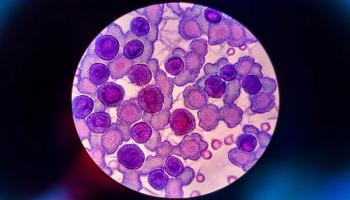
- November 2014 Cough & Cold
- Volume 80
- Issue 11
Using Computers to Predict Drug Side Effects
A combination of computer programs allowed Lawrence Livermore National Laboratory researchers to identify adverse drug reactions (ADRs) outside of the drug development laboratory.
Their method, described in a study published on September 5, 2014, in PLOS ONE, helped researchers to accurately pinpoint certain adverse events based on the interactions between drug proteins and drug compounds.
“We need to do something to identify these side effects earlier in the drug development cycle to save lives and reduce costs,” Monte LaBute, a researcher with the laboratory’s computational engineering division and the paper’s lead author, said in a press release.
There have been cases in which medications with off-target protein side effects have reached the marketplace and later been recalled. “We need a way to determine the safety of such therapeutics before they reach patients. Our work can help direct such drugs to patients who will benefit the most from them with the least amount of side effects,” LaBute said.
Given the long drug development timeline, high development costs, and low chance of a new drug in the early stages of testing ever reaching the pharmaceutical market, the process could provide a less expensive option for certain types of drug testing.
During the drug discovery process, candidate drug compounds are typically mixed with proteins associated with a specific disease to assess drug efficacy and toxicity. The method can identify side effects with several types of target proteins; however, drug compounds binding to off-target proteins can result in unwanted side effects or adverse events—and the sheer amount of potential off-target bindings makes testing cost prohibitive for companies. As a result, certain ADRs may remain undetected in clinical trials, only to be discovered once the drug reaches patients.
The researchers’ process involves selecting off-target proteins with high-quality 3-dimensional x-ray diffraction structures from several public databases, including DrugBank, UniProt, and Protein Data Bank. Their study cohort included 4020 off-target proteins initially, but was later trimmed to 409 off-proteins with the diffraction structures needed for computer analysis.
Researchers then fed the proteins through a special software program, VinaLC, running on a high-performance computer (HPC), with 906 FDA-approved drug compounds. The program’s molecular docking matrix then bound the drugs to the proteins, and assigned a binding score to each drug—protein combination. The binding score indicated the binding process’s efficacy.
Researchers fed the binding scores into another computer program and combined them with 560 FDA-approved drugs with known side effects, then applied an algorithm to determine which proteins were associated with certain side effects.
In vascular disorders and in neoplasms, the computational model was more predictive in the early stages of drug discovery than the statistical methods that do not use binding scores.
The method also predicted new drug side effects, which researchers validated by reviewing existing scientific data.
“We have discovered a very viable way to find off-target proteins that are important for side effects,” LaBute said. “This approach using HPC and molecular docking to find ADRs never really existed before.”
According to LaBute, the findings suggest a cost-effective and reliable method of screening for drug side effects. They hope to expand the research to include more off-target proteins for testing, and, eventually, screen every protein in the body.
“If we can do that, the drugs of tomorrow will have less side effects that can potentially lead to fatalities,” LaBute said. “Optimistically, we could be a decade away from our ultimate goal. However, we need help from pharmaceutical companies, health care providers, and the FDA to provide us with patient and therapeutic data.”
Articles in this issue
about 11 years ago
Confronting the Challenge of Health Care-Associated Infectionsabout 11 years ago
Whooping Cough Still Common Among Kids with Persistent Coughabout 11 years ago
Kids Infected with H1N1 More Susceptible to Severe Complicationsabout 11 years ago
Immune Response to Flu Increases During Pregnancyabout 11 years ago
Online System Could Prevent Disease Spread in Preschoolsabout 11 years ago
Antimicrobials Prescribed Often for Respiratory Infectionsabout 11 years ago
Colds Identified as Risk Factor for Stroke in Kidsabout 11 years ago
Cigarette Purchases Commonly Accompany Asthma Prescription RefillsNewsletter
Stay informed on drug updates, treatment guidelines, and pharmacy practice trends—subscribe to Pharmacy Times for weekly clinical insights.


















































































































































































































